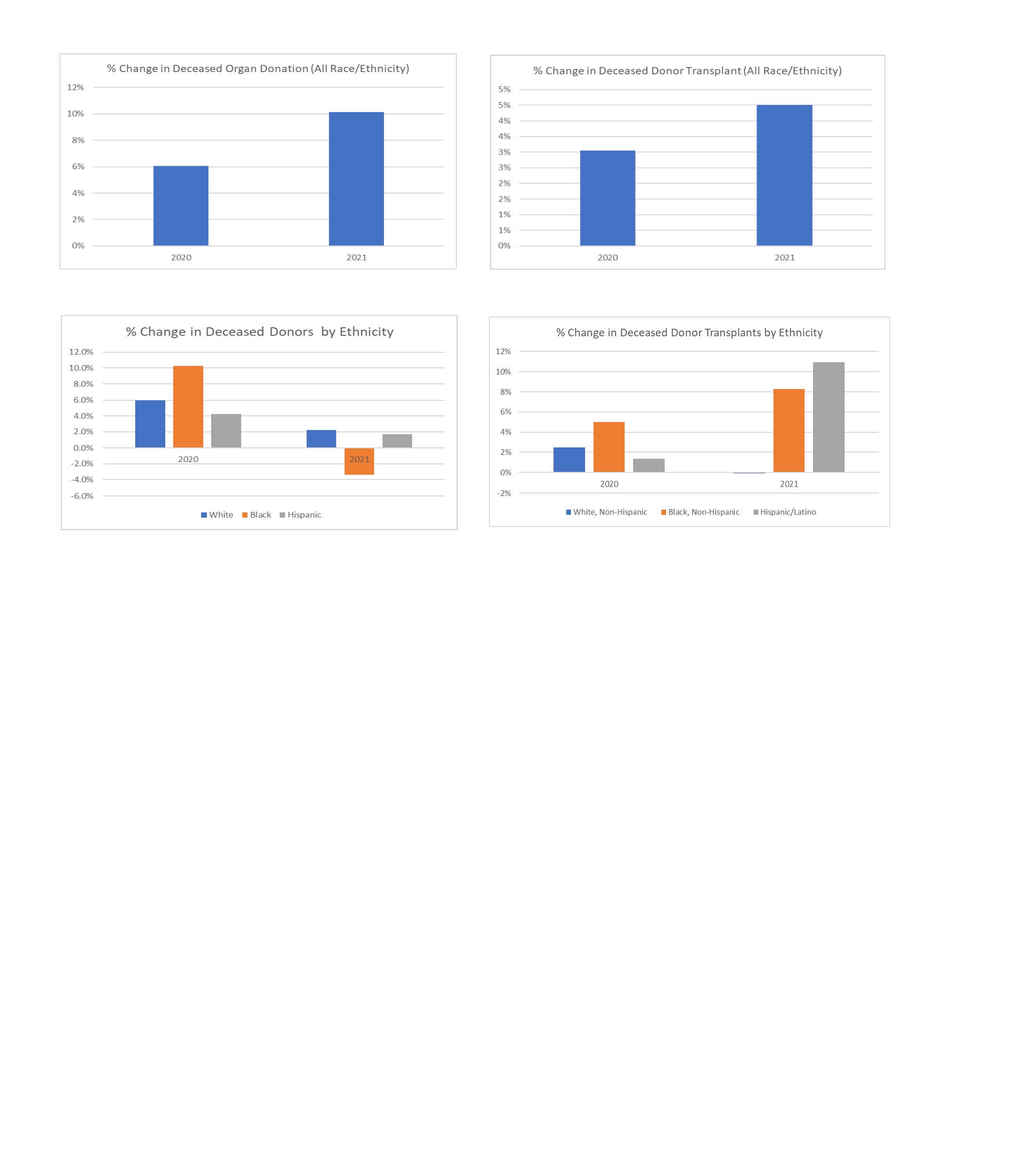Disparity In U.S. Organ Donation And Transplantation During A Global Pandemic
1Transplant Surgery, Tampa General Hospital, Tampa, FL, 2Morsani College of Medicine, University of South Florida, Tampa, FL, 3Transplant Hepatology, Tampa General Hospital, Tampa, FL
Meeting: 2022 American Transplant Congress
Abstract number: 9058
Keywords: African-American, COVID-19, Donation, Organ Selection/Allocation
Topic: Clinical Science » Organ Inclusive » 70 - Non-Organ Specific: Disparities to Outcome and Access to Healthcare
Session Information
Session Name: Non-Organ Specific: Disparities to Outcome and Access to Healthcare
Session Type: Poster Abstract
Date: Sunday, June 5, 2022
Session Time: 7:00pm-8:00pm
 Presentation Time: 7:00pm-8:00pm
Presentation Time: 7:00pm-8:00pm
Location: Hynes Halls C & D
*Purpose: Health disparities in the United States (U.S.) have become more evident during the pandemic with disproportionate death rates in Blacks and Hispanics (with and without COVID-19). The purpose of this study was to examine U.S. data for rates of change in deceased organ donation and transplantation during a global pandemic.
*Methods: We conducted a retrospective analysis of U. S. aggregated data from the Organ Procurement and Transplantation Network (OPTN) from January 2019 to December 2021. The data collected included organ donation, transplantation, and UNOS regions. We calculated the annual percentage change for Whites, Blacks, and Hispanics during the pandemic (2020-2021).
*Results: The overall annual rate of change in deceased donor organ donation increased by 6% in 2020 and 10% in 2021. However, ethnic minorities experienced a combined 14% increase in 2020 deceased organ donation (10% Black and 4% Hispanic), but a combined 1% decrease in 2021 (-3% Blacks and 2% Hispanics). The overall annual rate of change in deceased donor organ transplantation increased by 3% in 2020 and 5% in 2021. However, Black and Hispanic recipients experienced a collective 6% increase in deceased organ transplantation in 2020 (5% Blacks and 1% Hispanics) and a summative 17% increase in 2021 (8% Blacks and 11% Hispanics). Regional variation was also observed across ethnic groups.
*Conclusions: Overarching cultural disparities affect organ donation and transplantation; thus, it is imperative to examine the relative annual changes by ethnicity alongside overall changes. COVID and non-COVID excessive death rates in people of color during the pandemic played a role in potential candidates for organ donation and transplantation. In 2020, when excessive minority deaths were attributed to COVID-19 by the CDC, the rate of minority deceased organ donation increased by 14% (10% Blacks and 4% Hispanics). During this same timeframe, the rate of transplants increased in Black (5%) and Hispanic (1%) recipients. Since the implementation of widespread vaccination distribution, community education for vaccination hesitancy, and access to more aggressive treatment and testing options, these trends in minority organ donation have not persisted. Exactly how this translates into long-term disparities in end-organ failure, organ donation, and transplantation has yet to be determined.
To cite this abstract in AMA style:
Buggs J, Dhanireddy K, Kumar A, Kemmer N. Disparity In U.S. Organ Donation And Transplantation During A Global Pandemic [abstract]. Am J Transplant. 2022; 22 (suppl 3). https://atcmeetingabstracts.com/abstract/disparity-in-u-s-organ-donation-and-transplantation-during-a-global-pandemic/. Accessed December 19, 2025.« Back to 2022 American Transplant Congress

